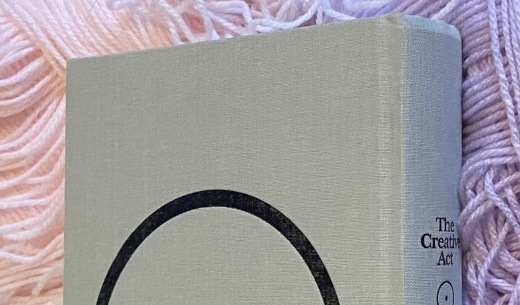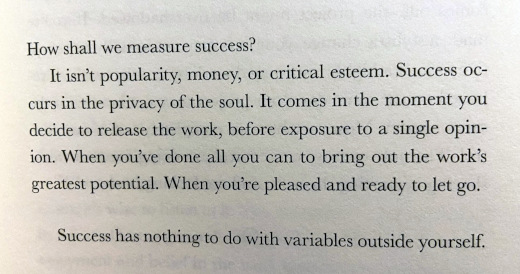My Takeaways From The Creative Act

Are you creative? It’s a question that provokes different answers depending on who it is posed to. For some they would definitely have an answer to it, but for others they may wonder why it was asked of them in the first place. I have asked this of myself, someone who’s got his head down into a laptop computer most of his days doing whatever it takes to get through working in software technology. Then I will pull my head out of that laptop and look around me and remind myself that I am indeed creative.
Creativity comes in many forms, not just in output but in the process, or act. This is the theme of The Creative Act: A Way Of Being by Rick Rubin. Rubin is the legendary music producer who co-founded the Def Jam Recordings label and has worked with everyone from the Beastie Boys to Aerosmith to Johnny Cash and many, many others. Known for his eccentricity, last year he published this book of his thoughts on the creative process.
As I read through this unique book, I imagined how it possible came together: Rubin walking around his studio, barefoot, dictating his thoughts to someone following him around. Whether that was the case or not, his thoughts are presented in a unique way – there are dozens of “chapters” with some ranging from a couple of pages to more, but none too long. As I read through the book I was certainly inspired and had over a dozen significant takeaways, however I decided to refine the list to the following.
We all are artists – A pervasive theme throughout the book is that we are all artists. Often we think of artists as painters, photographers, writers, musicians... people who create things that are considered under the relatively rigid category of “art.” Often I sit back and look at a business or technical solution I have worked on for whatever time and even impress myself, finding a creative way to get from where I and my team are to where we want to be. Where nobody would be clamoring to have my work products from it framed and hung in a gallery, they have been deemed creative by others, so I would consider them art. I also consider myself creative with my time in improv and the writings here at this humble blog as ample examples.
Agile as art? – When I say “agile” I am referring to the philosophy/methods/approach/mindset of incrementally developing software and other products, often identified by frameworks such as Scrum and Kanban. With a goal in mind, a team of people are creating something, not necessarily knowing exactly what that finished product will look like. Where those on the team may not consider themselves artists or creative (nor others outside of a team looking at a bunch of business and tech types) this is not to say there is creativity and artistry in their work and process.
Ideas come from the outside, not the inside – This is an ethereal concept, where Rubin professes that ideas are out there, in the wild, and we recognize them and work with them. I’m not sure I completely agree with it, but he makes compelling points towards it. Perhaps the inspirations I would get when I walked along Lake Michigan in Chicago actually were in the air... along with the gnats buzzing around the shoreline?
Crafting – Rubin talks of how Andy Warhol did a lot of crafting, where he created an idea and had other artists execute on it. This triggered a pleasant flashback to 2006 when the Cloud Gate sculpture in Chicago’s Millennium Park was formally dedicated which I attended. During his speech the artist who created/crafted the artwork affectionately known as The Bean, Anish Kapoor, was repeatedly thanking the company Performance Structures, Inc. who took his idea and plans and actually built it. I just so happened to be in the crowd standing next to the president of the company, who was simultaneously blushing and beaming at the attention from Kapoor as he was pointing in our direction.
What is success to you? – Where many quotes from the book stirred something in me, this was especially did:

The quote reads as follows:
“How shall we measure success?
It isn't popularity, money, or critical esteem. Success occurs in the privacy of the soul. It comes in the moment you decide to release the work, before exposure to a single opinion. When you've done all you can to bring out the work's greatest potential. When you're pleased and ready to let go.
Success has nothing to do with variables outside yourself.”
When I have true success, I have felt this way. Do you agree?
“Comparison is the thief of joy” – This is a quote from the 26th US President Theodore Roosevelt, which is fitting from an individual there was really no comparison to in his lifetime.
I first learned of The Creative Act when I saw this video of Rick Rubin being interviewed by Anderson Cooper for 60 Minutes which is embedded below.
From my days in college radio I remember seeing Rubin’s name as the producer of many albums that came into the radio station. So last summer when on vacation and stopped into a locally-owned bookstore in northern Wisconsin and I saw the book in their collection, I had to buy it. I enjoyed it thoroughly, both in its format and collection of wisdom from a true modern guru. This is a book I recommend to everyone, whether you think you are creative or not (and if not, it may sway you). The destination for the giveaway of this book is a colleague and mentor who I feel is very creative in how he consults and educates... and I am pretty sure he concurs with my opinion.
This is from The Hot Iron, a journal on business and technology by Mike Maddaloni.
Did you enjoy this? Subscribe to The Hot Iron by RSS/XML feed or Read by Email
Book Take-Aways • (0) Comments • PermalinkComments
Post a Comment
Note: Comment moderation is active, and your comment will be viewable once it is reviewed.


 Buy Me a Coffee
Buy Me a Coffee